Hello my dear friends of hive I hope you are well and have had a happy and blessed day and start of the week, today I want to share with you one of the very traditional recipes of my people as it is the bollito stuffed with meat wrapped in dry corn husks note that this tradition is very llanera, not only are prepared in this way filled with meat but are prepared with pork rinds, spicy etc.. My parents had the custom of preparing these buns wrapped and tied with the same leaf because they give more taste and there were few times that they ate them when they were taken out of the pot, they say that they are tastier when they are cold because the flavor is more concentrated, they had as a tradition that every Friday they cooked beans with chicharrón and their respective buns, who was more "llanero" or as some people say more peasant was my grandfather, he ate only the beans with the buns, he did not accept that they put another companion in the meal, My great-grandmother used to prepare the buns with corn, which she boiled until it softened and then grind it to obtain the dough, but that was not all, after they were cooked she hung them in the kitchen or stove for up to two days and when she wanted to eat buns she only heated them, I tell you that preparing these buns either stuffed with meat or with pork rinds is a little bit of work but it is worth it to make them. Without further ado I leave you in the description how to prepare these stuffed buns.
Hola mis queridos amigos de hive espero se encuentren bien que hayan tenido un feliz y bendecido día e inicio de semana, hoy quiero compartir con ustedes una de las recetas muy tradicionales de mi pueblo como lo es el bollito relleno con carne envueltos en hojas de maíz seco cabe destacar que esta tradición es muy llanera, no solamente se preparan de esta forma rellenos de carne sino que se preparan con chicharrón, picantes etc. Mis padre tenían la costumbre de preparar estos bollos envueltos y amarrados con la misma hoja porque le dan más gusto y eran pocas las veces que se los comían al momento de bajarlos de la olla ellos decian o dicen que son más sabrosos cuando están fríos ya que el sabor se concentra mas, tenían como tradición que todos los viernes cocinaban frijoles en fogón con chicharrón y sus respectivos bollos, quien era más llanero o como le dicen algunas personas más campesino era mi abuelo el comía solamente los frijoles con los bollitos no aceptaba que le colocaran otro acompañante en la comida, mi bisabuela preparaba los bollos de maíz pilado, trillado o partido el cual sancochaba hasta ablandarse para luego moler y así obtener la masa pero eso no era todo ella despues de cocidos los colgaba en la cocina o fogón hasta por dos días y cuando quería comer bollo solamente los calentaba, les comento que preparar estos bollos bien sea rellenos con carne o con chicharrón tienen un poco de trabajo pero vale la pena hacerlos. Sin mas preámbulo les dejo en la descripción como preparar estos bollos rellenos.
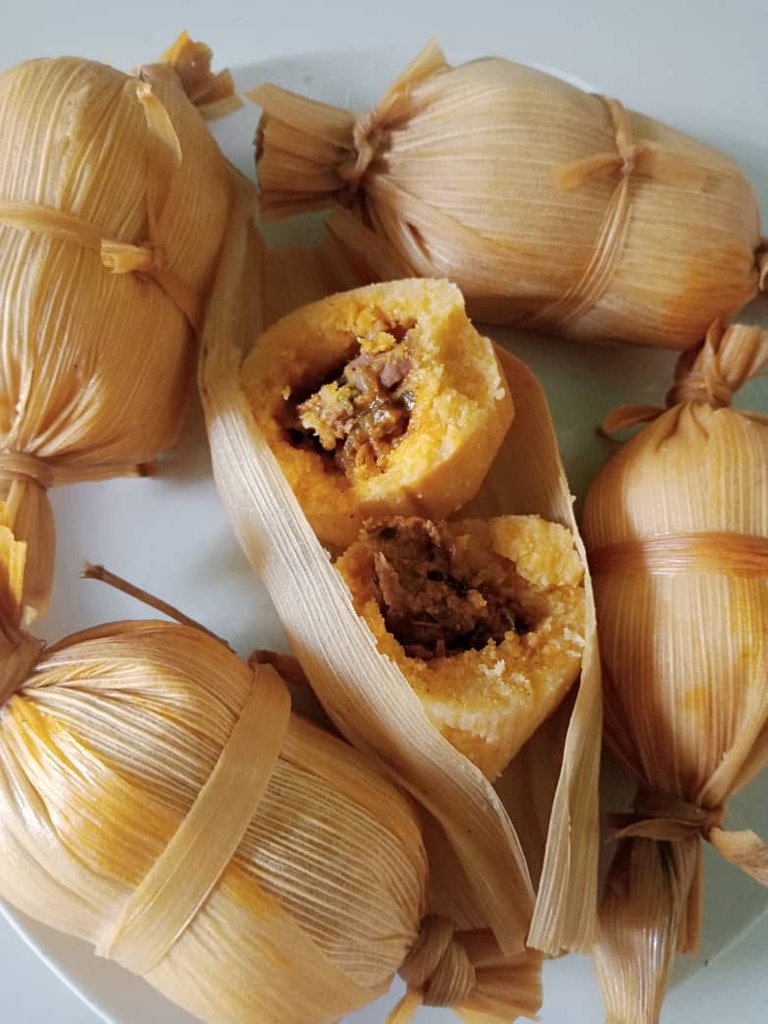
Ingredients I used:
✔️ 250 Grams of masisa beef.
✔️ 2 Heads of garlic.
✔️ 3 sprigs of chives.
✔️ 2 sprigs of cilantro.
✔️ 4 Chili peppers.
✔️ 1 Onion.
✔️ 1 Tbsp capers.
✔️ 2 Tablespoons olives can be pitted or stuffed.
✔️ 1 Tablespoon of paprika.
✔️ 1 Tablespoon dried oregano.
✔️ Salt to taste.
✔️ Dried corn husks.
Ingredientes que utilice:
✔️ 250 Gramos de carne de res masisa.
✔️ 2 Cabezas de ajo.
✔️ 3 Ramas de cebollín.
✔️ 2 Ramas de cilantro.
✔️ 4 Ají
✔️ 1 Cebolla.
✔️ 1 Cucharada de alcaparras.
✔️ 2 Cucharadas de aceitunas pueden ser con hueso o rellenas.
✔️ 1 Cucharada de paprika.
✔️ 1 Cucharada de orégano seco.
✔️ Sal al gusto.
✔️ Hojas de maíz seco.
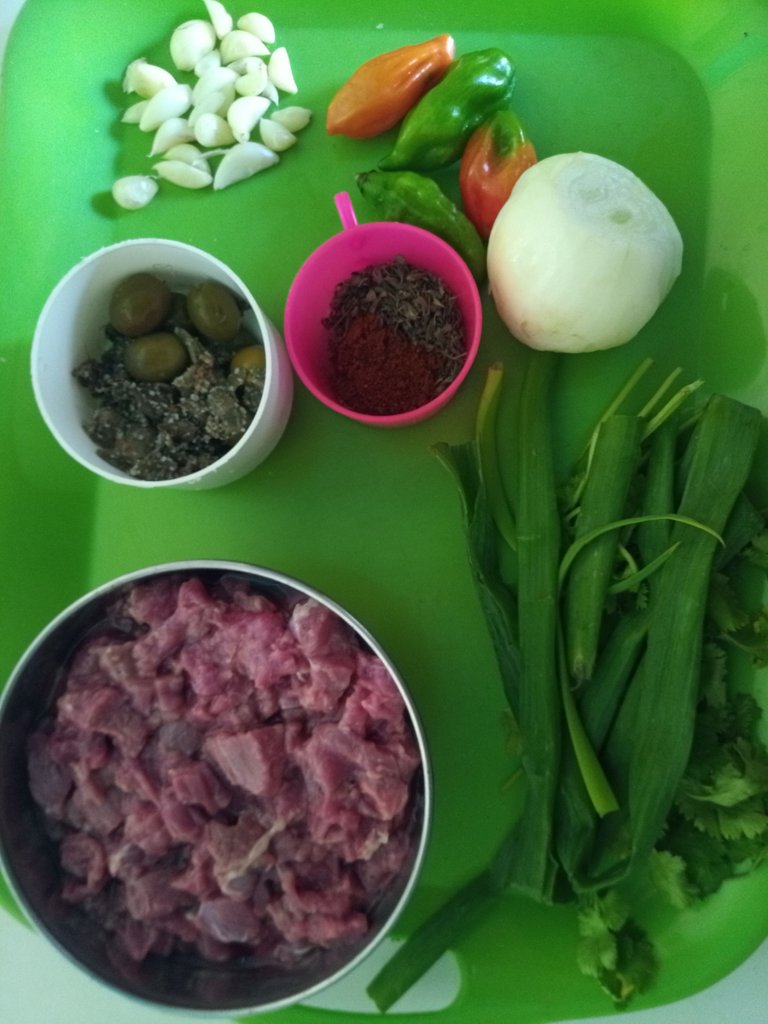
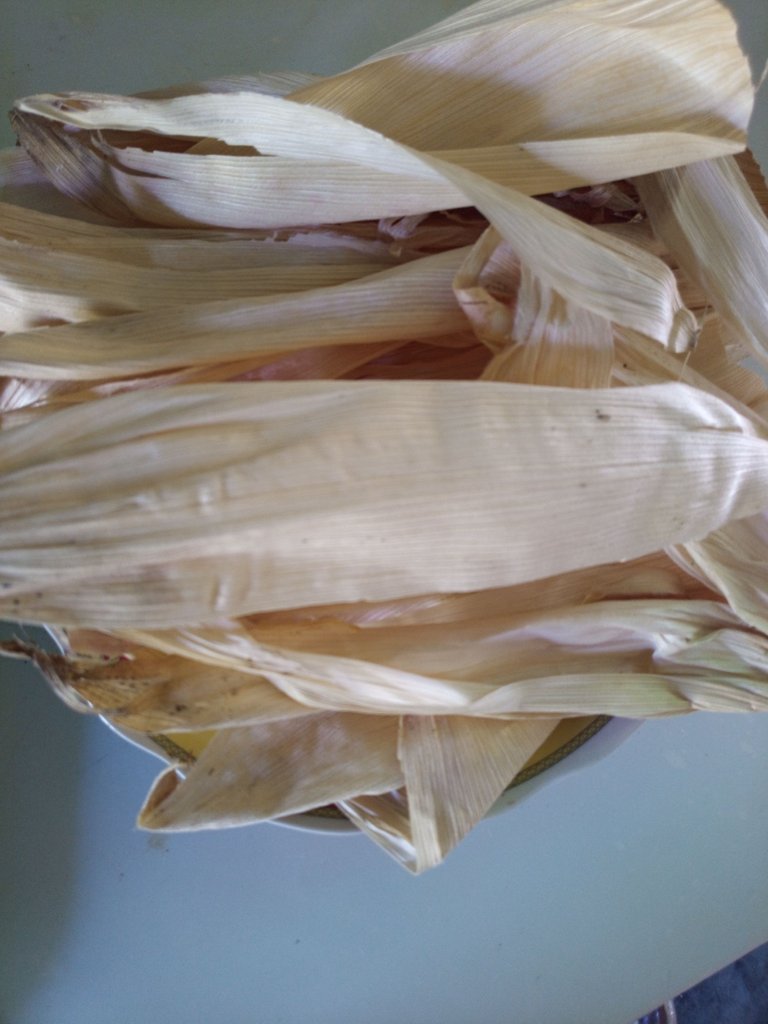
Step 1 👣
Chop the meat, onion, chili, cilantro, chives, wash the capers and olives to remove the salt and cut into pieces.
Paso 1 👣
Picar la carne, cebolla, ají, cilantro, cebollín, lavar las alcaparras y la aceitunas para sacarles la sal y cortar en trozos, triturar o machacar el ajo.
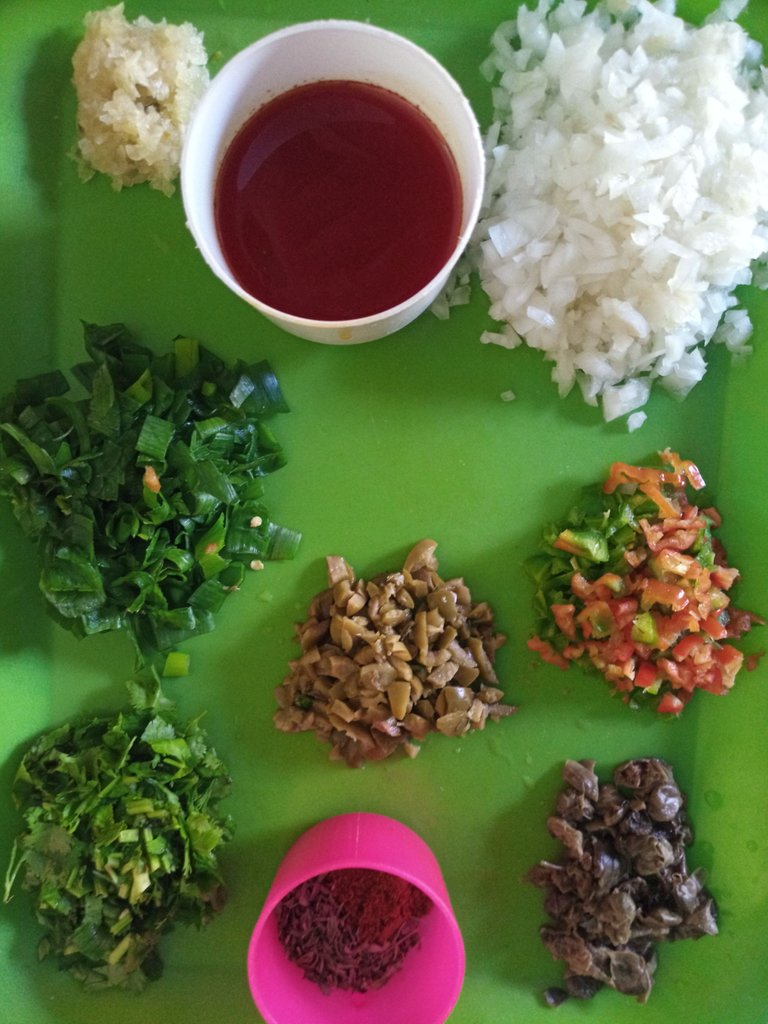
Step 2 👣
In a pot with water place half a tablespoon of oregano add the meat to cook for 6 minutes, this is to soften a little and throw the blood.
Paso 2 👣
En una olla con agua colocamos media cucharada de orégano agregamos la carne a cocinar por 6 minutos, esto es para que ablande un poco y bote la sangre.
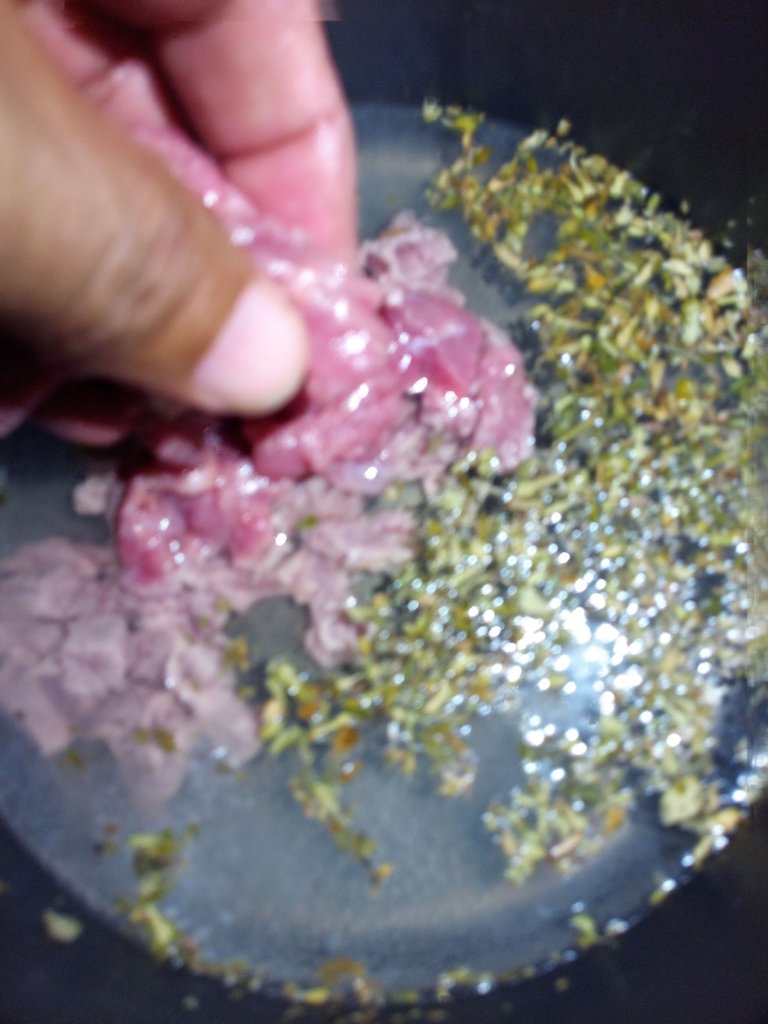
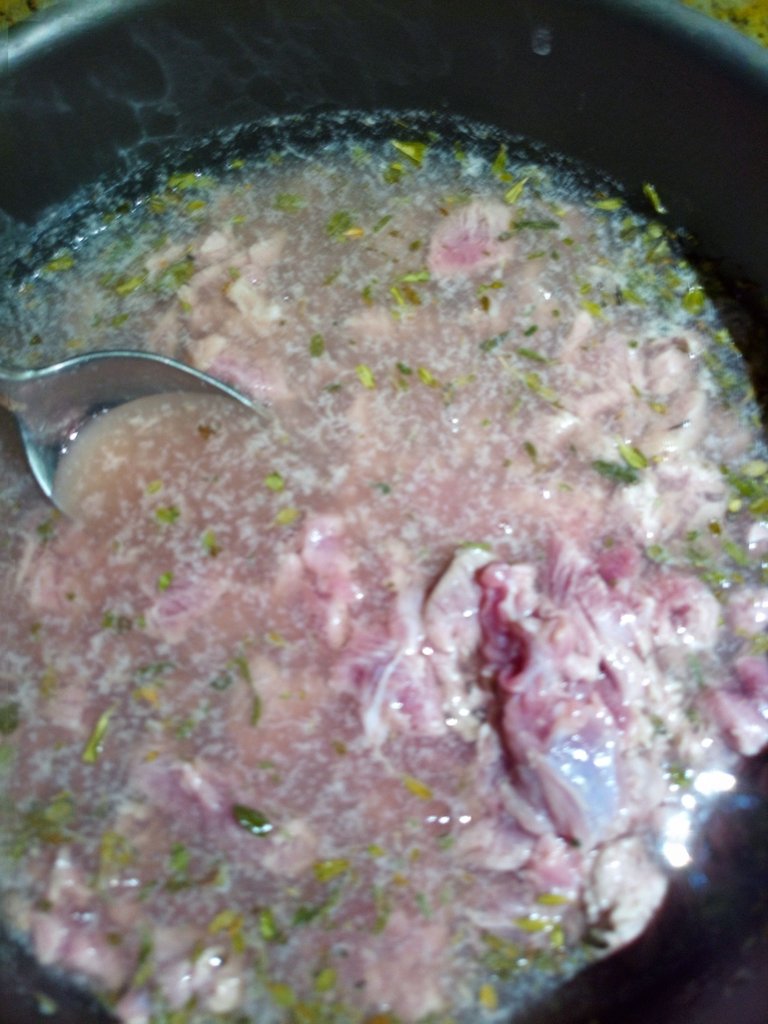
Step 3 👣
Place in the pan oil with natural dye (onoto) and add the crushed garlic, onion, onion, chili, cilantro, chives, dried oregano, paprika, capers and olives mix to integrate all the seasonings, then add the meat and a little water where the meat is cooked (I added two small cups) and two tablespoons of corn flour this is to complete the cooking of the stew and will be a little thick.
Paso 3 👣
Colocar en la sartén aceite con colorante natural ( onoto ) y añadimos el ajo triturado, la cebolla, ají, cilantro, cebollín, orégano seco, paprika, alcaparra y la aceituna la mezclamos para integrar todos los aliños, luego agregar la carne y un poquito del agua donde se sancocho la carne ( yo le agregué dos tazas pequeñas) y dos cucharadas de harina de maíz esto es para completar la cocción del guiso y quedará un poco espeso.
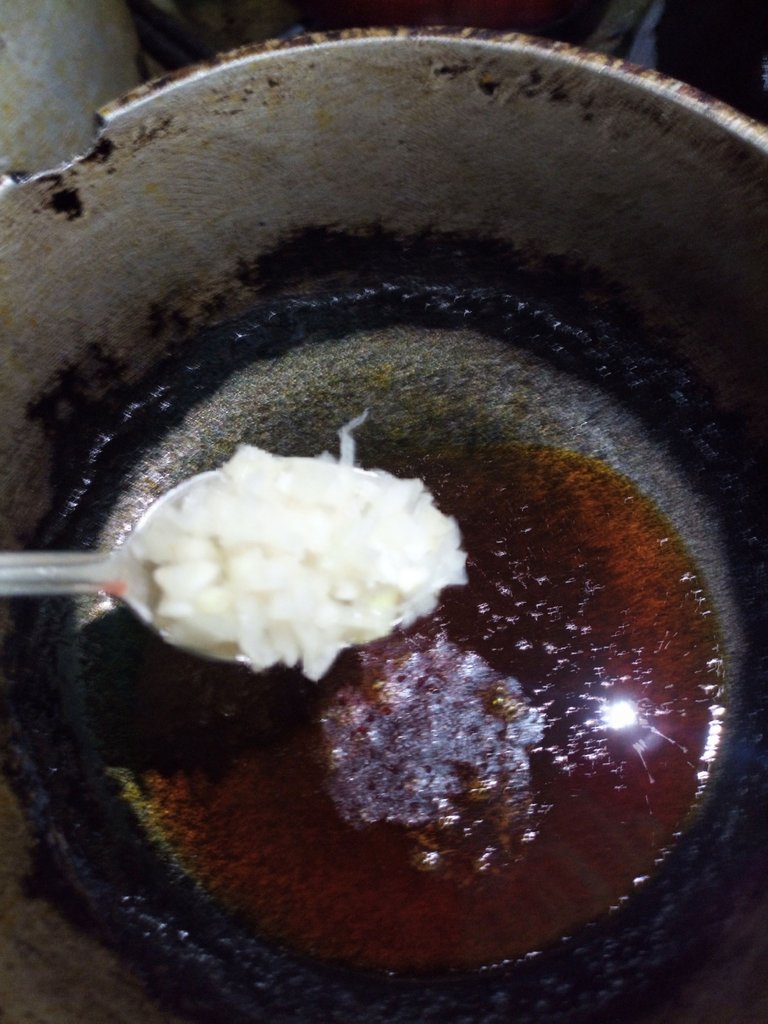
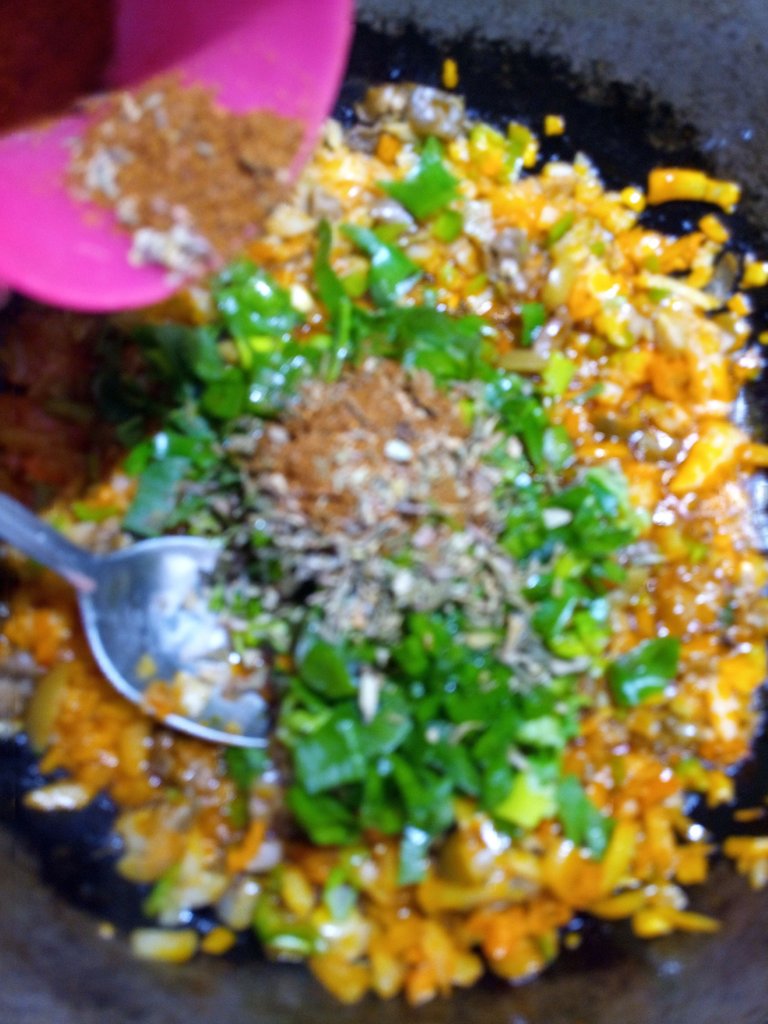

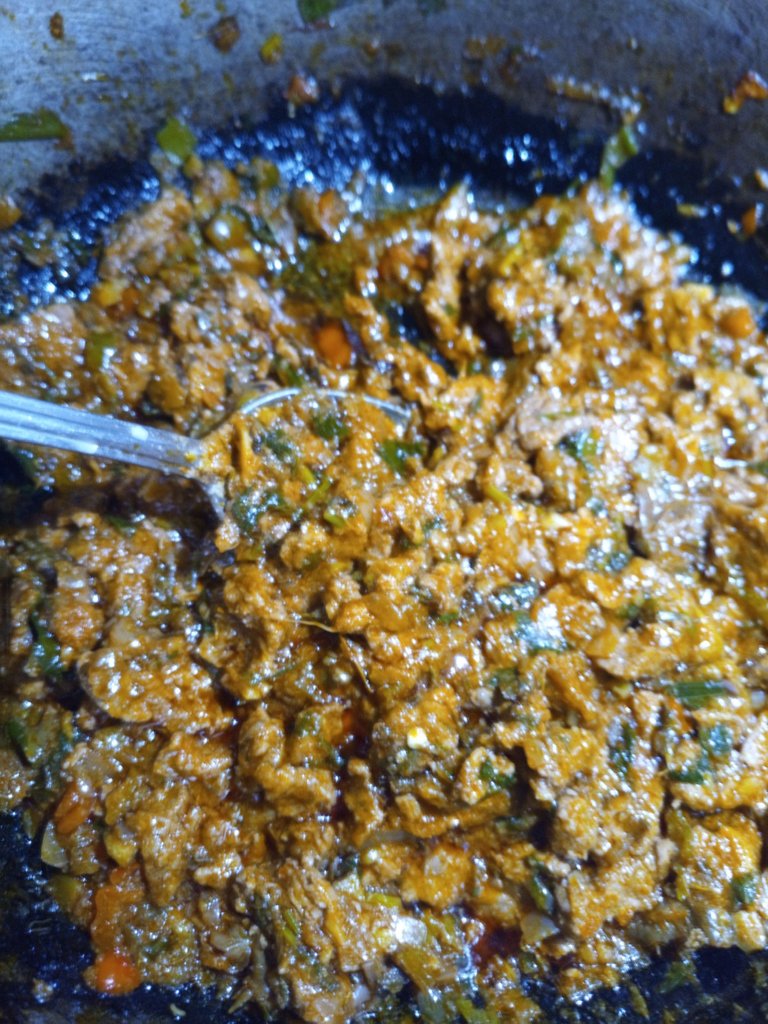
Step 4 👣
Wash the corn husks to remove impurities.
Paso 4 👣
Lavar las hojas de maíz para sacar las impurezas.
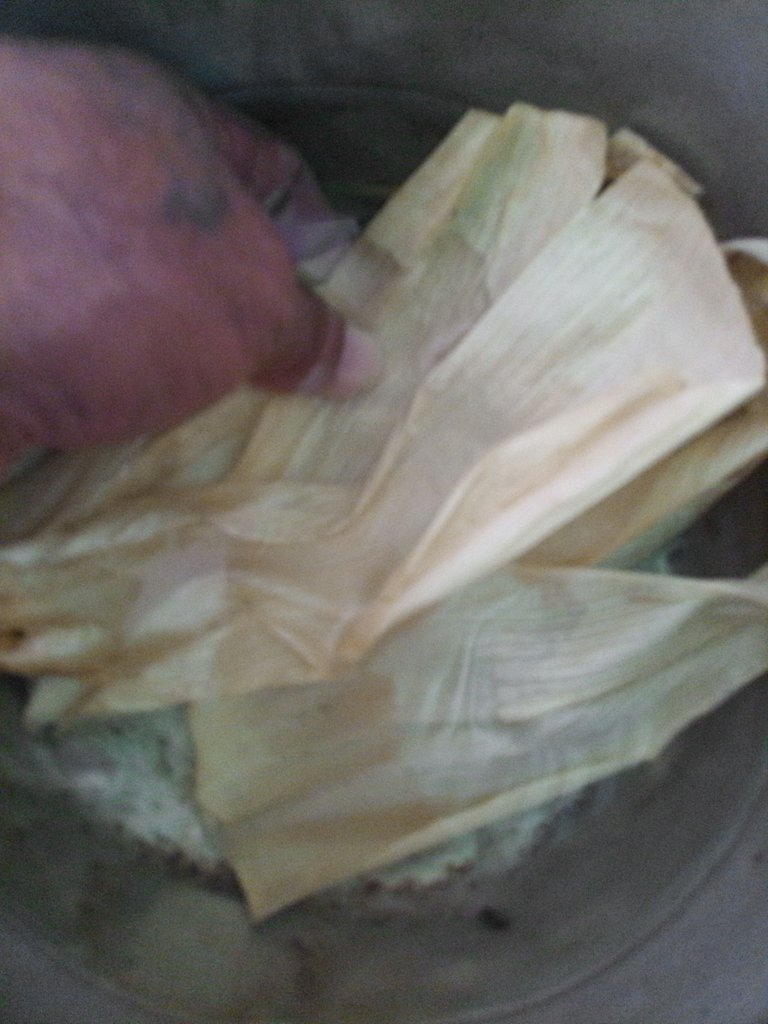
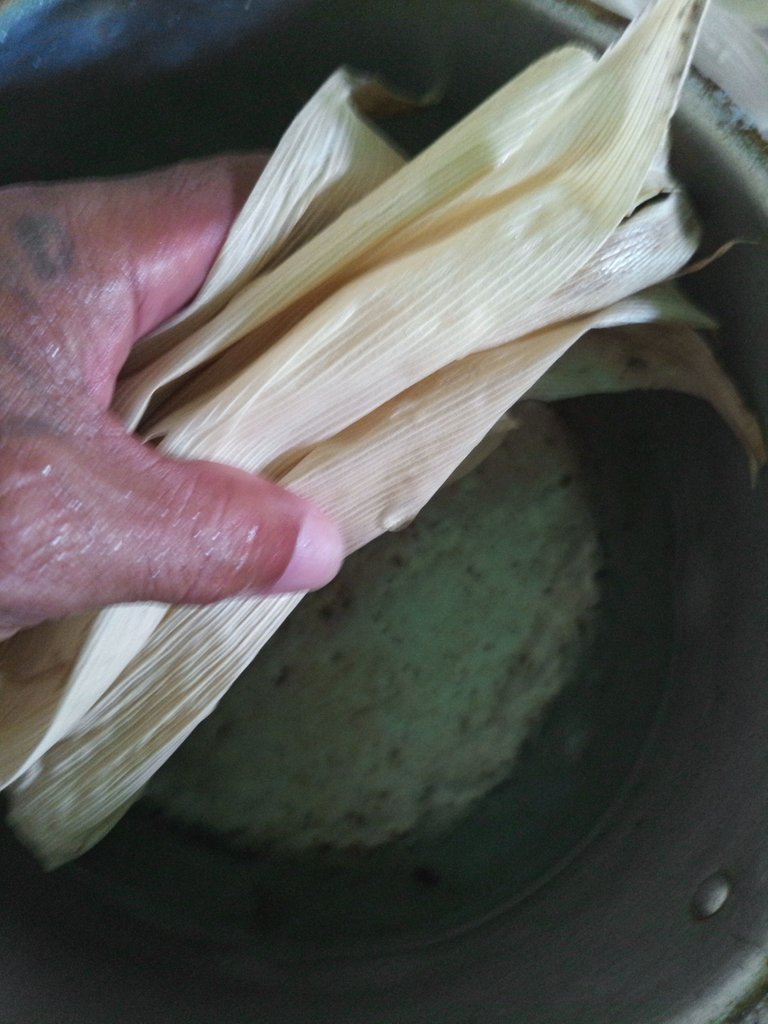
Step 5 👣
In five hundred grams of corn flour we add oil with natural dye and knead until the desired consistency, take a small portion of the dough form a small ball or oval we open a hole to place the filling seal and give the oval shape but a little long.
Paso 5 👣
En quinientos gramos de harina de maíz le agregamos aceite con colorante natural y amasamos hasta obtener la consistencia deseada, tomamos una pequeña porción de la masa formamos un pequeña bola u ovalado le abrimos un hueco para colocar el relleno sellamos y le damos la forma ovalada pero un poco larga.
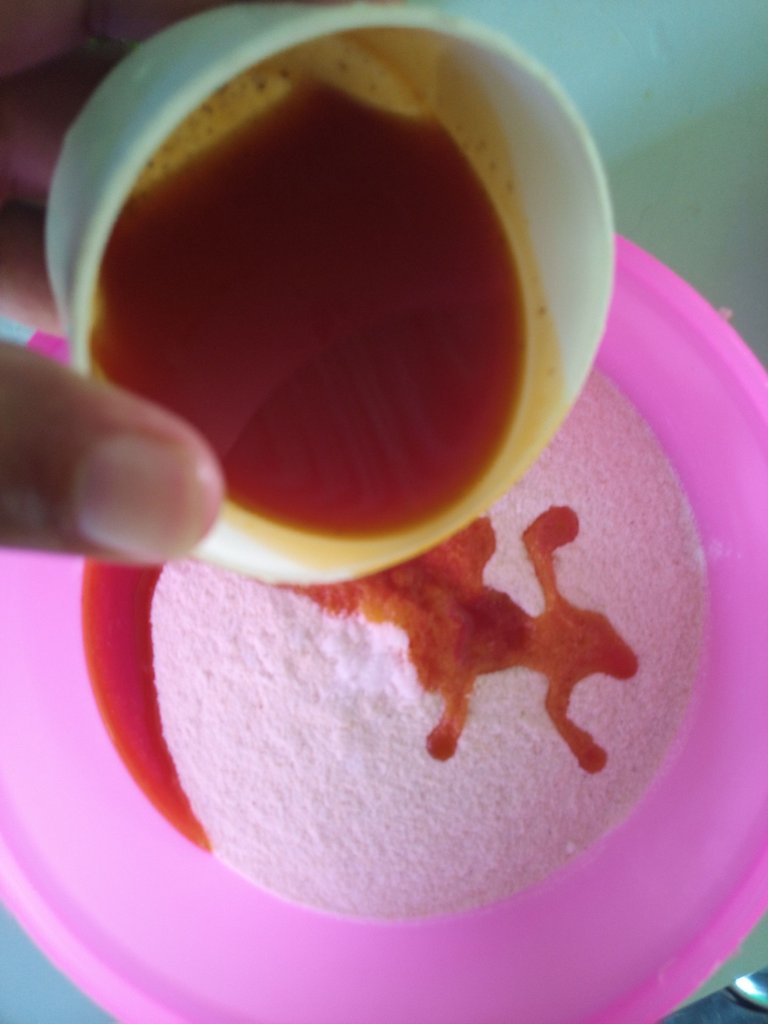
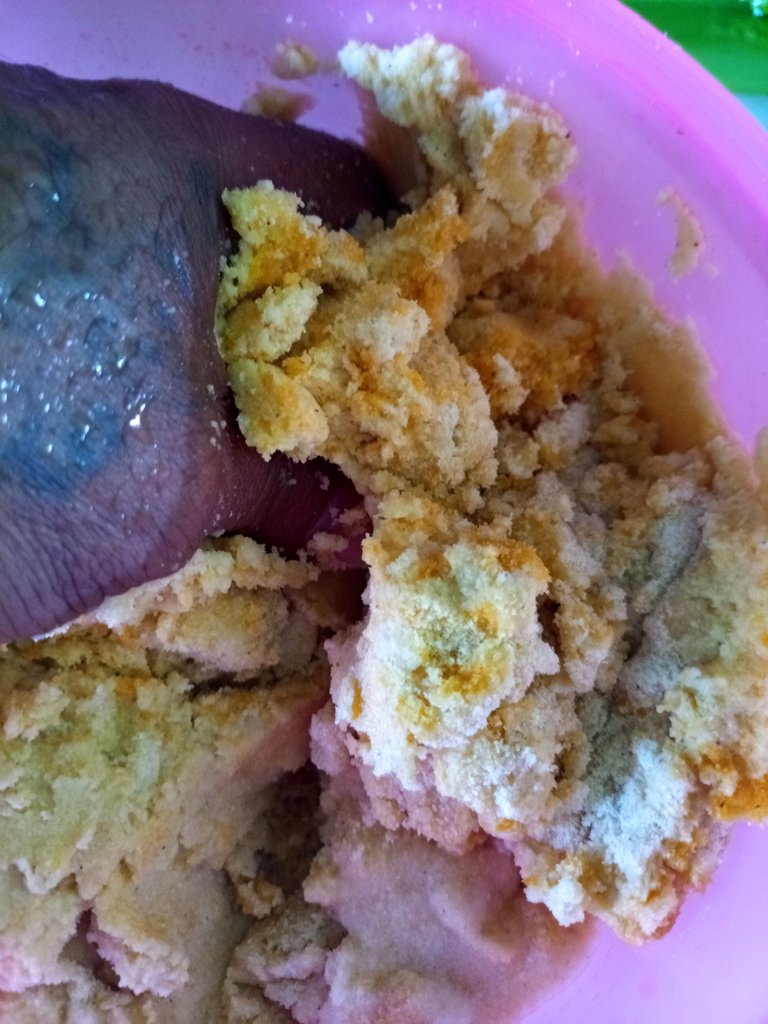
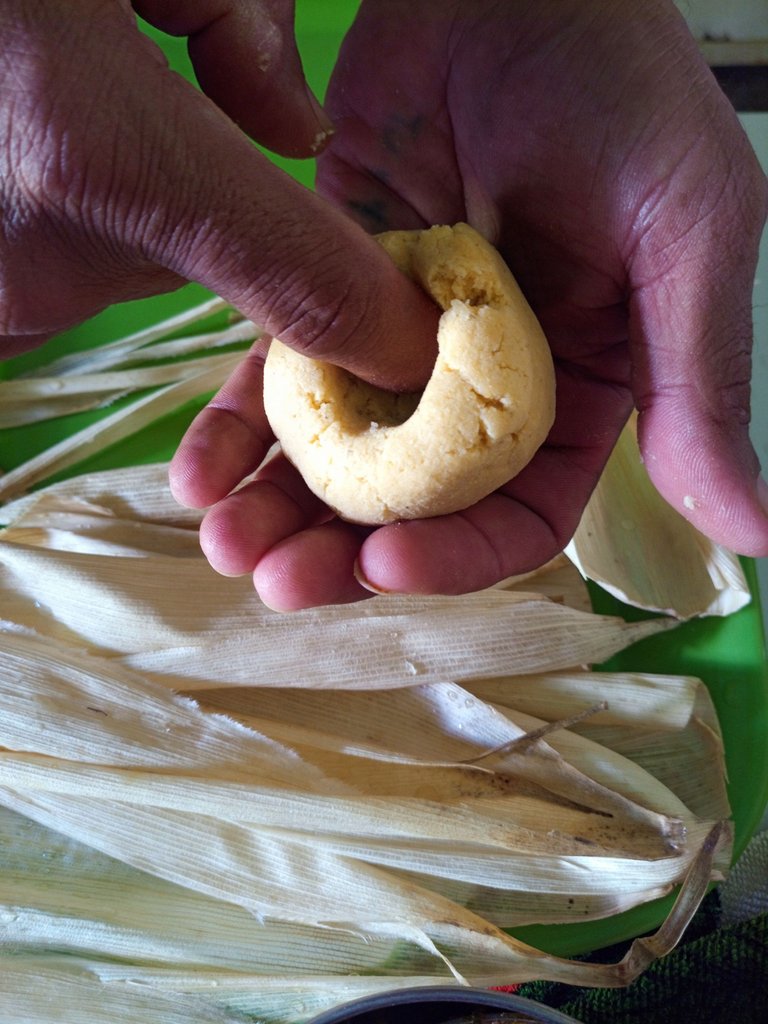
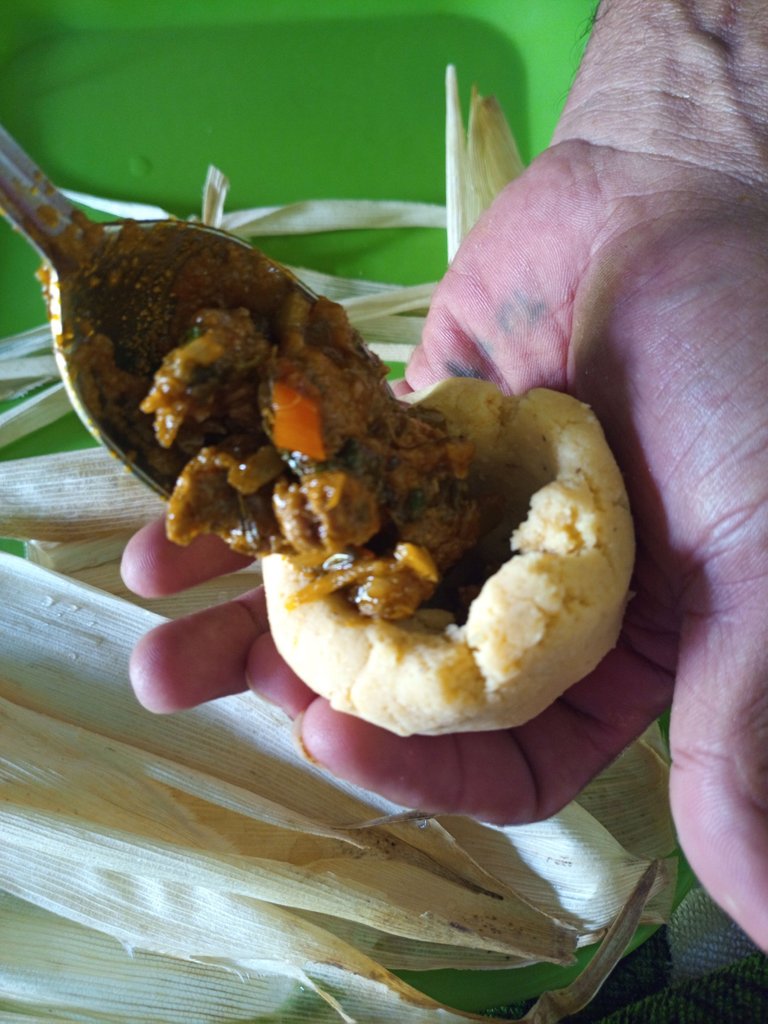
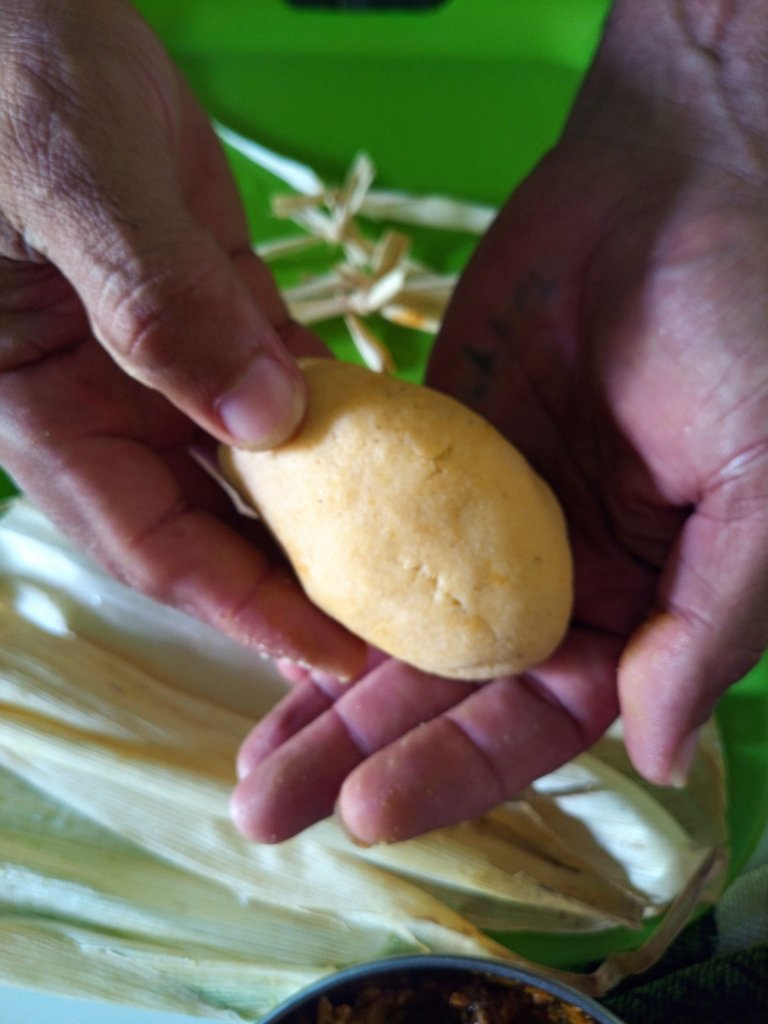
Step 6 👣
We place on the leaves the bun we cover them all and with a ribbon of the same leaf we knead the tips and in the center, we place them in a pot with boiling water for cooking for fifteen to twenty minutes.
Paso 6 👣
Colocamos en las hojas el bollo los cubrimos todo y con una cinta de la misma hoja le amamos las puntas y en el centro, los colocamos en una olla con agua hirviendo para su cocción por quince o veinte minutos.
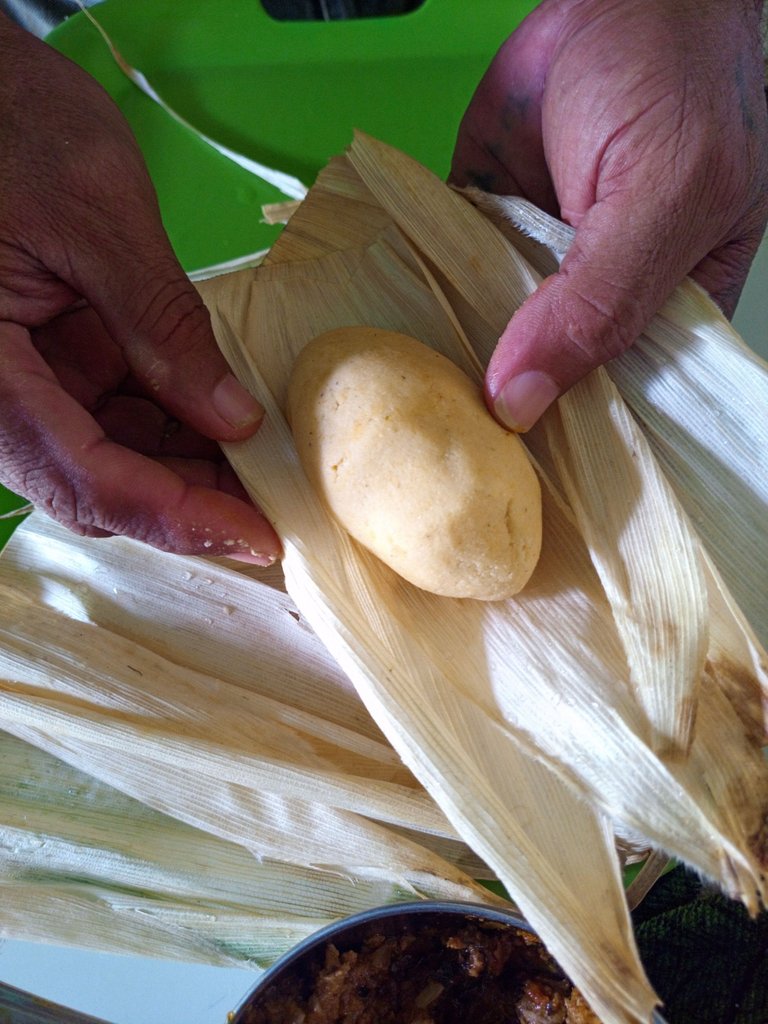
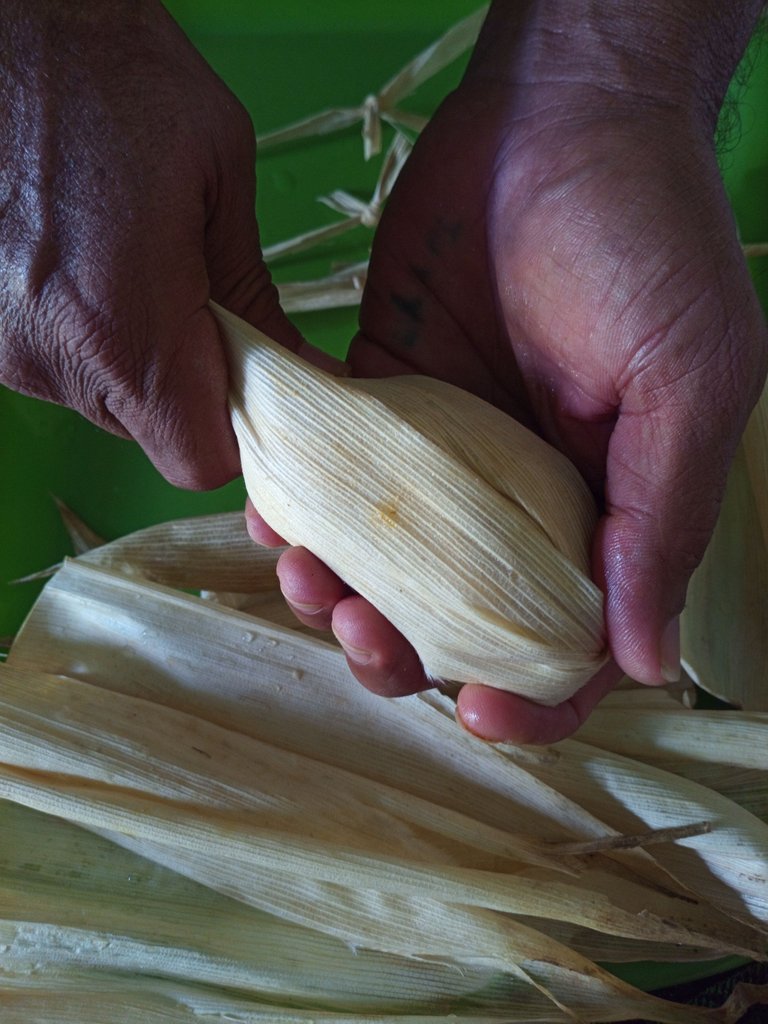
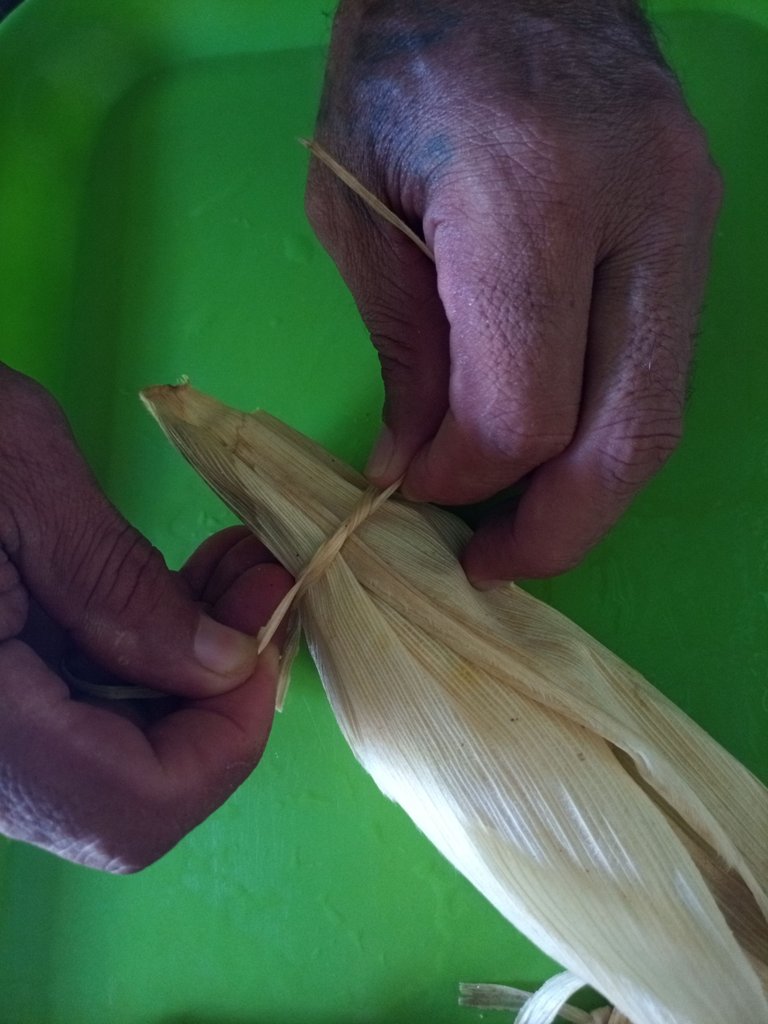
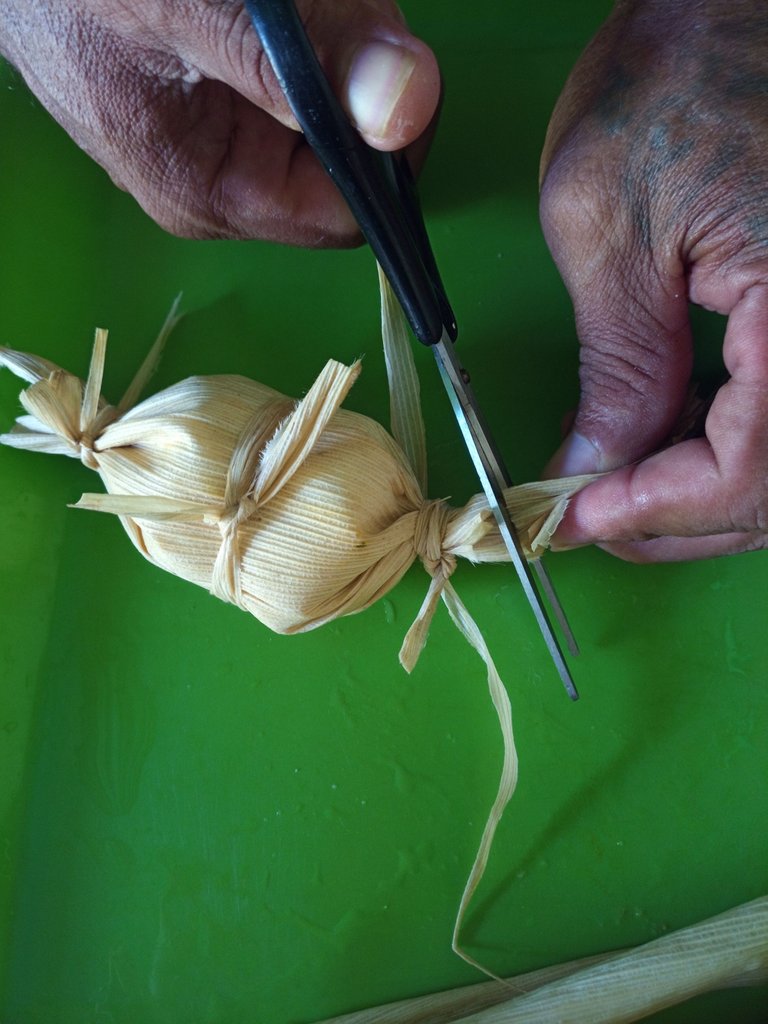
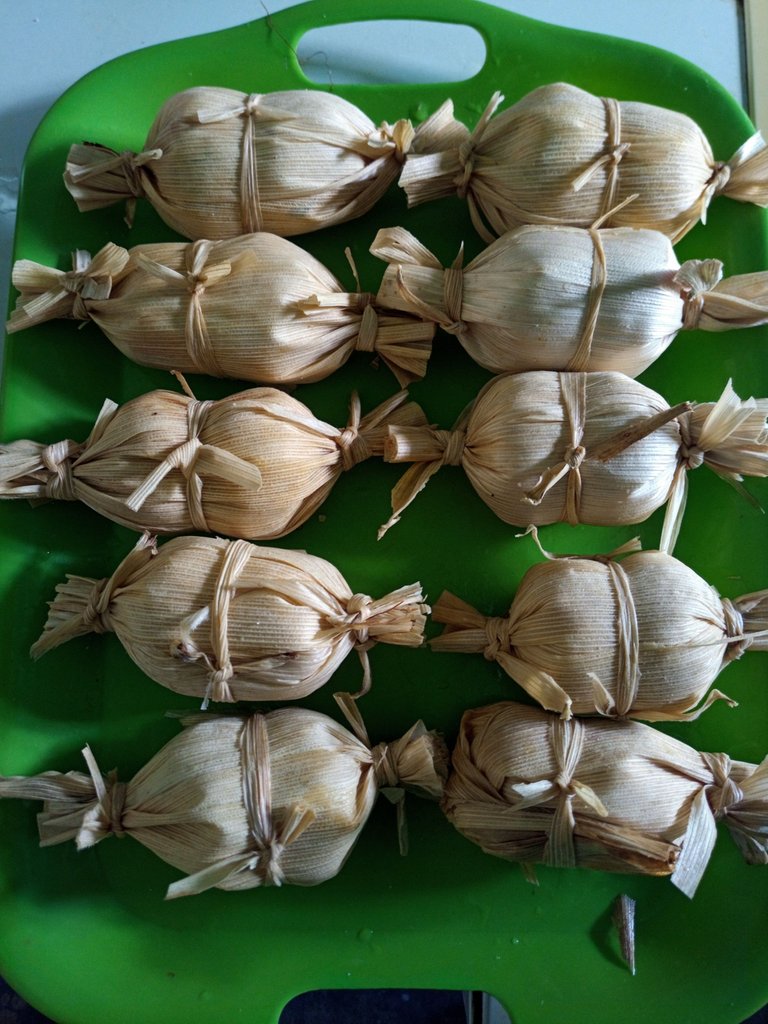
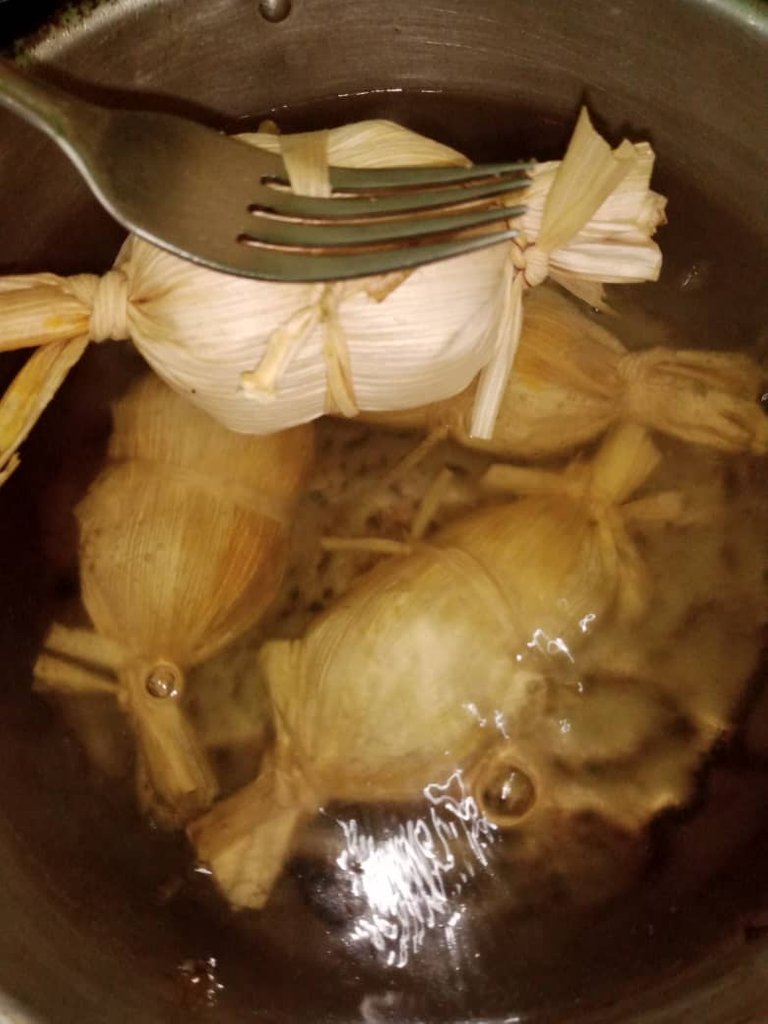
This is how the stuffed buns would be served with traditional white rice, slices or fried plantains, salad and a little bit of the leftover stew, I hope you like my presentation and I invite you to prepare these delicious stuffed buns or if you prefer with chicharrón (pork rinds).
De esta forma quedarían los bollos rellenos los acompañe con arroz blanco tradicional, tajadas o plátano frito, ensalada y un poquito del guiso que sobró, espero les guste mi presentación e invito a preparar estos ricos bollos rellenos o si prefieren con chicharrón.
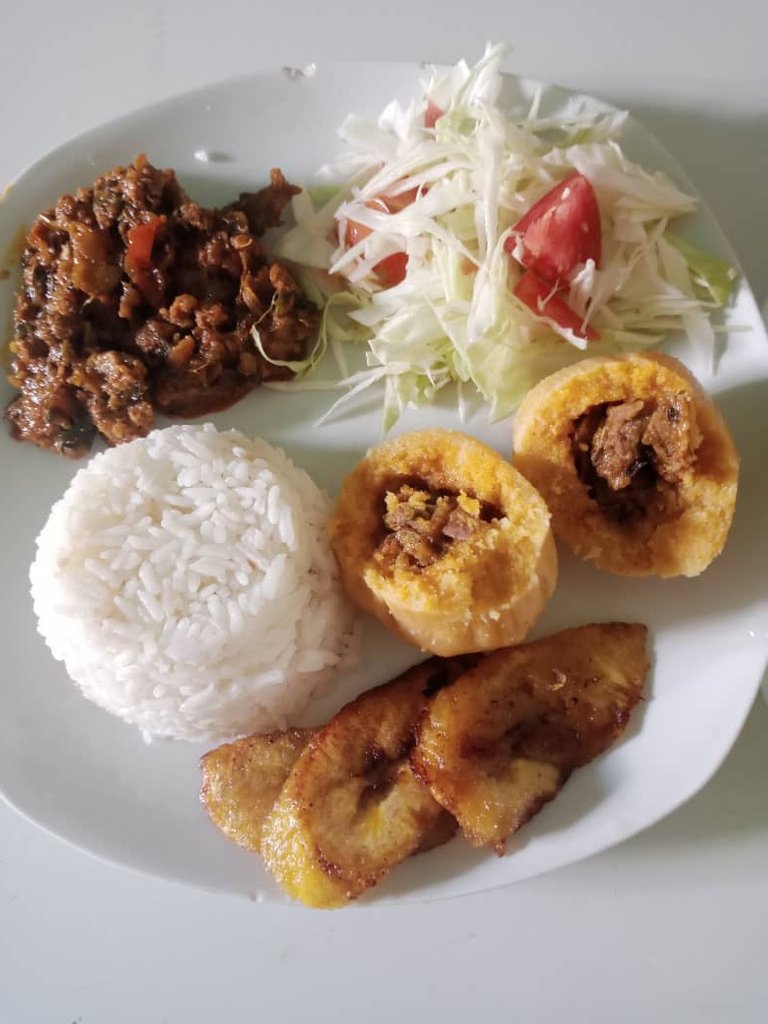
The photos are of my authorship taken with my Umidigi A5PRO cell phone.
Las fotos son de mi autoría tomadas con mi teléfono celular Umidigi A5PRO.
Thank you for visiting and commenting, until the next opportunity.
Gracias por visitar y comentar, hasta la próxima oportunidad.
Use Deepl translator for Spanish - English tradition.
Utilice el traductor Deepl para la tradición de Español - Ingles.
My location is the central plains of Venezuela.
Mí ubicación los llanos centrales de Venezuela.
